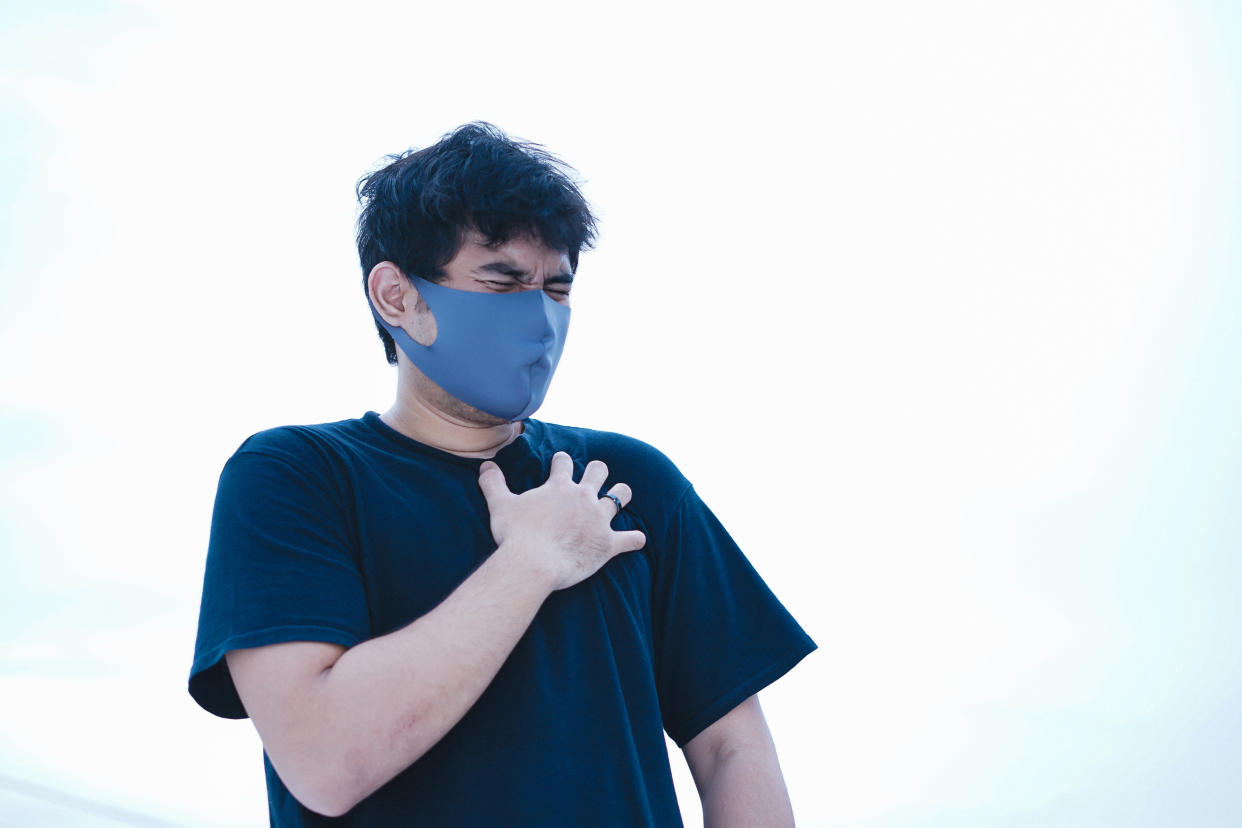Hospital sees heart disease patients drop by 53% during lockdown

Throughout the coronavirus outbreak, officials have stressed the NHS is open for business.
Concerns were raised early in the pandemic that people may be putting off seeking medical care over fears they could catch the infection in hospital.
These anxieties were exacerbated when it emerged “excess” fatalities were occurring among people who did not have COVID-19, the disease caused by the coronavirus, on their death certificate.
Read more: Google anxiety searches break records amid coronavirus pandemic
Cardiologist from the Dumfries and Galloway Royal Infirmary in Scotland have since revealed the number of patients presenting to their clinic was down by more than half (53%) during lockdown.
The number of heart attack diagnoses also dropped by 40%, the statistics show.

Worsening of pre-existing heart conditions ‘inevitable’
“At the height of the pandemic, it is acceptable to deviate from the standard level of care and agreed guidelines in order to prioritise the delivery of essential services,” the medics wrote in the journal Open Heart.
“However, adverse consequences for some patients presenting with worsening of their underlying cardiac conditions have been inevitable.
“As ischaemic heart disease [caused by narrowed arteries] continues to be the leading cause of death nationally and globally, cardiology services need to prepare for a significant increase in workload in the recovery phase and develop new pathways to urgently help those adversely affected by the changes in service provision.”
Read more: Breast-milk ice cubes could deliver coronavirus antibodies
Cardiovascular disease, like heart attacks or strokes, are behind a quarter of deaths in the UK and a third in the US.
In line with the UK government’s guidelines, lockdown forced cardiology services to adopt more virtual outpatient clinics, redeploy staff to urgent medical services and reschedule non-critical procedures.
Staff also had to treat the cardiac complications of COVID-19, which are increasingly coming to light.
With the risk of a second coronavirus wave looming, the Dumfries medics set out to better understand how lockdown impacted cardiovascular services.
They analysed changes to their own clinic and its supporting Golden Jubilee National Hospital in Glasgow between January and May. Boris Johnson enforced the “stay at home” measure on 23 March.
Results revealed there were significant reductions in every area of the cardiovascular units – outpatient clinics, investigations, procedures and specialist community services, and rehabilitation.
During the first month of lockdown, the number of people seen for angina or breathlessness fell by 53% from 2019, from 83 to 39.
The number of heart attack diagnoses also dropped by 40%, from 30 to 18.
Testing was also affected. The number of cardiac troponin T blood tests, which detect heart muscle damage, were down 46% from 691 to 374.
The number of patients referred from primary care to cardiology outpatient clinics also fell by 80%, from 386 to 76.
Read more: Soft singing 'no riskier than talking', coronavirus study finds
Medics at Dumfries hospital made use of phone and video consultations to minimise the infection risk to patients and staff. Face-to-face clinics therefore reduced by 93%, from 474 to 30.
While the use of services improved during the second month of lockdown, they were still below pre-restriction levels.
Although the medics only looked at one centre, they believe it is “likely similar changes will be seen in other medical and surgical specialties”.
The reduced patient numbers, testing and referrals likely came about due to restructuring and prioritisation of NHS services at the height of the outbreak, according to the team.
Restricted access to primary care and patient reluctance to seek medical help may have also played a role, they said.
The team added, however, the pandemic has highlighted the potential of technology in delivering healthcare, with virtual clinics being a “long-lasting legacy”.
The research comes as scientists from Boston University found almost a third fewer cases of stroke were seen in US hospitals during the height of the pandemic compared to the same period in 2019.



